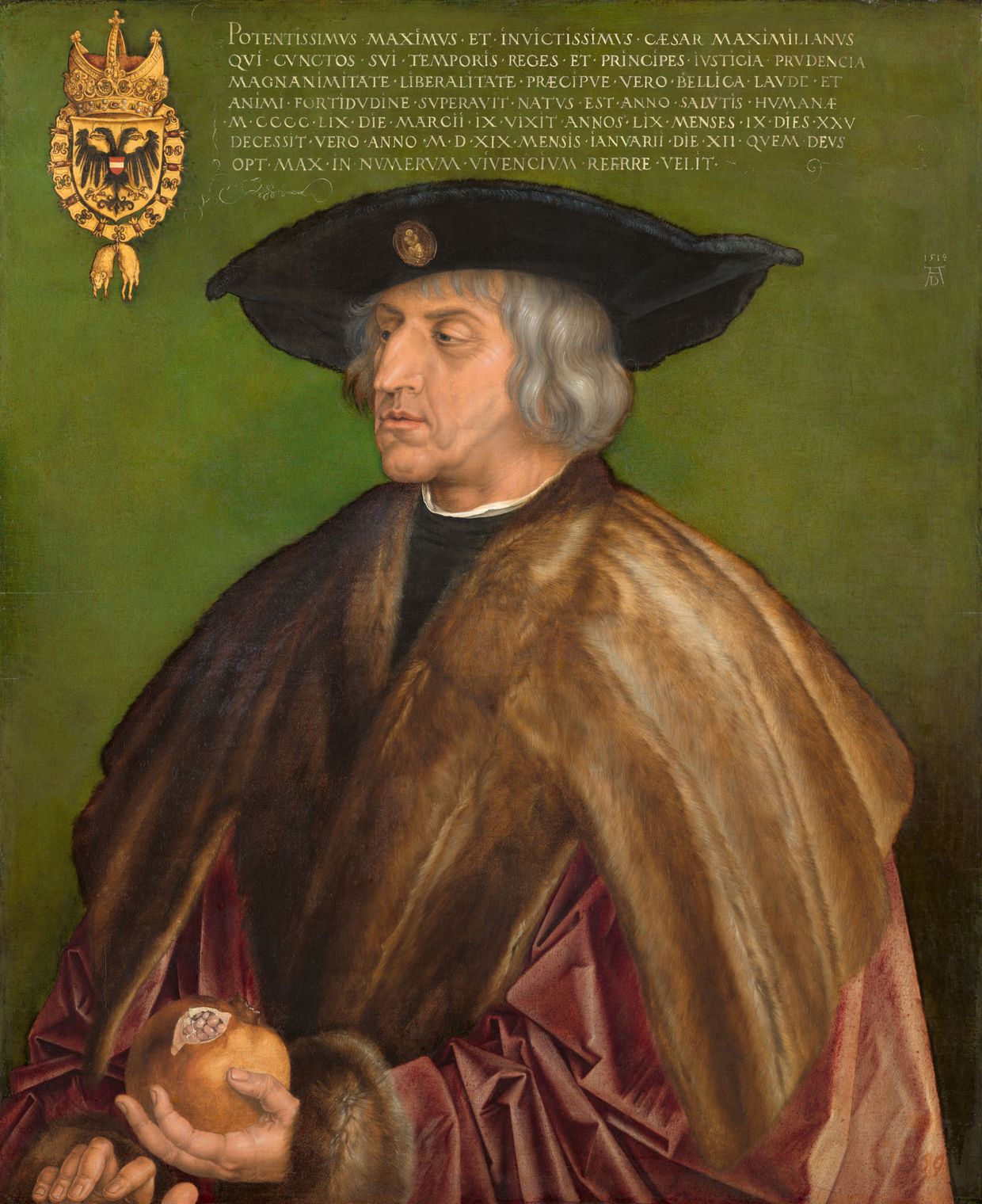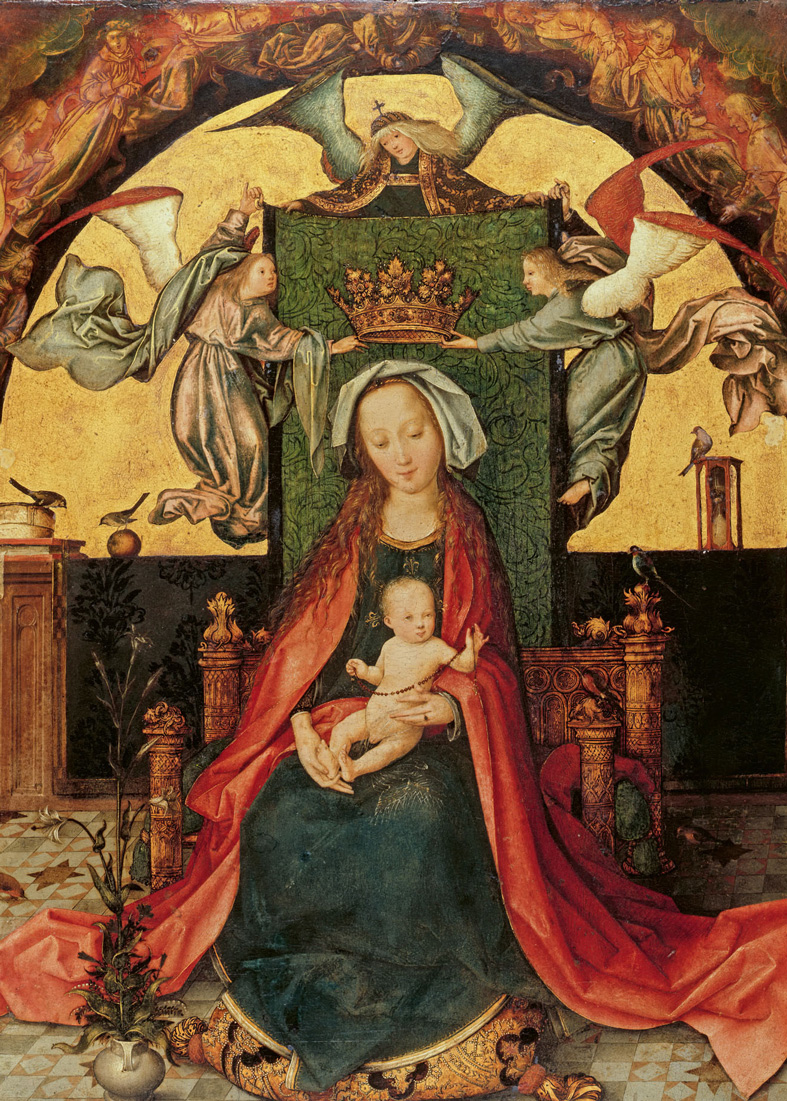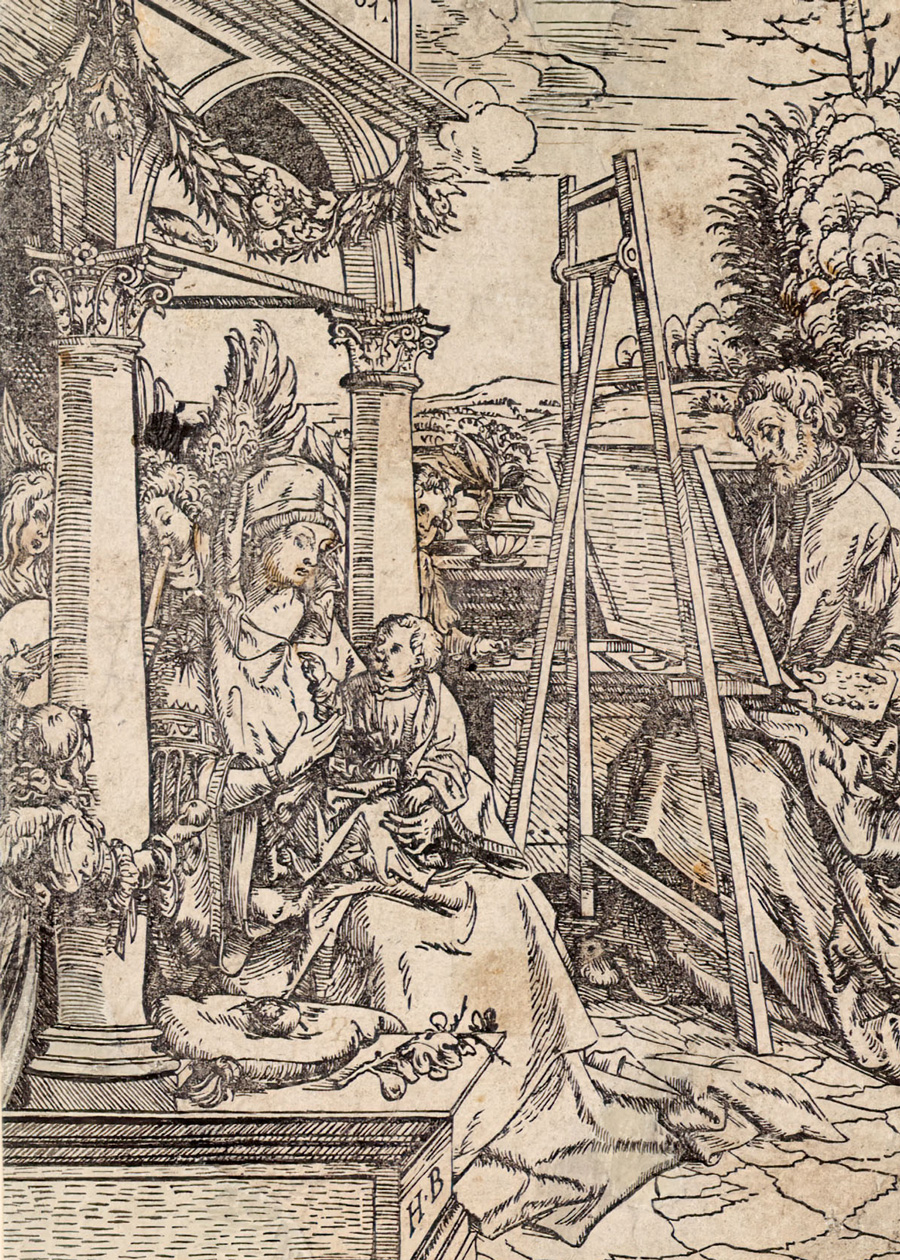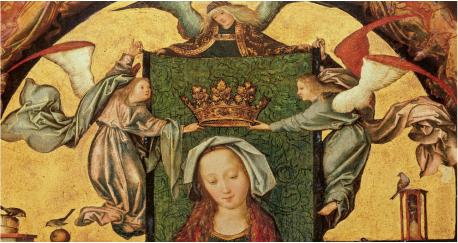Artisan & artist
Change in how artists
saw themselves
In the Middle Ages, art was regarded more as a pure craft rather than a form of intellectual creativity. Its principal aim was to show the divine. The art of the late Middle Ages was guided by religion and, in particular, by church doctrines. In the Renaissance, by contrast, the focus was placed on what was graceful, earthly, and human. This can be attributed to the rediscovery of how classical Greece and Rome viewed the world. The revival paved the way for new inventions and discoveries.


Hans Holbein the Elder, Self-Portrait, c.1516
Still a craftsman?
Hans Holbein
the Elder
Hans Holbein the Elder was the senior member of a famous family of painters that included his brother Sigmund and his sons Ambrosius and Hans Holbein the Younger. In addition to his altarpieces. his drawings, too, deserve particular attention: the corpus of his drawings is the most extensive of any German artist up to his own day and second only to that of his contemporary Albrecht Dürer
| Born | 1465, Augsburg, Germany |
| Died | 1524 Augsburg (?), Germany |
| Children | Hans Holbein the Younger |
| Partner | ? |
| Eltern | Michael Holbein, Anna Mair |

Already an artist?
Hans Burgkmair
the Elder
As Hans Burgkmair the Elder was the son of an artist, we can assume that he started his artistic training at a very early age. His close friendship with Konrad Peutinger led to numerous commissions from the emperor. His intensive study of the Italian Renaissance and his innovations in the field of printmaking made Burgkmair one of Augsburg’s most sought-after artists.
| Born | 1473, Augsburg, Germany |
| Died | 1531, Augsburg, Germany |
| Parents | Thoman Burgkmair, ? |
| Children | Hans Burgkmair the Younger |
| Partner | Anna Allerlay |

Hans Burgkmair the Elder, Self-Portrait, 1517
Hamburg, Hamburger Kunsthalle, Kupferstichkabinett, inv. 23008 © bpk | Hamburger Kunsthalle | Christoph Irrgang
Emancipation of artists
Artisans become artists
The Renaissance greatly enhanced the standing of artists, who had previously been regarded as artisans.
The loosening of an artist’s ties to handcraft was achieved by acquiring a humanist education that could make artists the equals of scholars and wealthy educated people. Hans Burgkmair, too, moved from a craftsman’s background into an intellectual milieu.

Hans Burgkmair the Elder, Self-Portrait at his Betrothal, 1497/1498

Hans Burgkmair the Elder, Self-Portrait at his Betrothal, 1497/1498
Many self-portraits by Burgkmair confirm that he saw himself as an individual and a creative intellectual. The earliest surviving likenesses are these two astonishing drawings which Burgkmair made to commemorate his betrothal and, six months later, his wedding to Anna Allerlay. They unmistakably demonstrate his pride in his appearance, revealing both his self-confidence and his fashion sense.
The detailed lines of text on the picture commemorating his betrothal are a very valuable source: they offer first proof of Burgkmair’s long-standing connection with the Augsburg humanist and town clerk Konrad Peutinger, in whose house the betrothal took place.
In this guise I took my wife Anna Allerlay
Hans Burgkmair, pen and greyish black or black ink, watercolour on paper, Vienna, Albertina, 1497
The detailed lines of text on the picture commemorating his betrothal are a very valuable source:
they offer first proof of Burgkmair’s long-standing connection with the Augsburg humanist and town clerk Konrad Peutinger Konrad Peutinger, in whose house the betrothal took place.

Laux Lucas Furtenagel, Portrait of Hans Burgkmair the Elder and his wife Anna, née Allerlay, 1529
Death and youth
This last portrait by Burgkmair, who died a short time later in 1531, is also his most puzzling one: it bears the signature of his pupil Laux Furtenagel and appears to be copy of a lost self-portrait by the artist that was also made in 1529.
The harrowing double portrait from 1529 shows Burgkmair and his wife Anna confronting the approach of death:
They are reflected in the mirror as skulls.
The couple’s gaze and the painter’s gesture are intended to instil in us an awareness of our own approaching death. This is something art can do: today, through the picture, we can still engage with the couple.

Hans Burgkmair the Elder’s signet ring, Before 1529
The signet ring that the painter wears on the index finger of his outstretched left hand has survived.
It is decorated with Burgkmair’s initials and the coat of arms that Maximilian I had granted him in 1516. An indication of the great esteem in which the monarch held his artist. Maximilian I was fully aware of how best to use important artists for his purposes.

Albrecht Dürer, Portrait of Emperor Maximilian I, c.1519 or later
Competition between artists
Colleagues and rivals
Augsburg offered many artists an opportunity to work successfully. In the field of painting Hans Holbein the Elder and Hans Burgkmair were the leading figures in the city and brought painting into a new age.
But they understood art in very different ways:
Inspired by Italian painting, Burgkmair employed Renaissance forms at an early stage in his career. In his later pictures he used a warm palette of colours typical of Venetian painting.
Holbein, who was about ten years older, initially oriented himself on the style of the Early Netherlandish painters. His art is characterized by a dramatic liveliness, glowing colours, and strong expressiveness. It is only the works of his final period that show the influence of the Italian Renaissance.
From 1499 the nuns of St Catherine’s Dominican convent commissioned a series of paintings devoted to the seven main churches of Rome. At the centre of each picture there is a view of a particular Roman basilica as the respective artist imagined it. Conveniently, an indulgence could be gained by praying in front of these pictures at St Catherine’s – making the arduous pilgrimage to Rome unnecessary.
On looking at this panel by his older colleague Hans Holbein the Elder, Hans Burgkmair may have noticed that Holbein, moving a step ahead of him, had integrated Italian motifs in the work. For instance, the executioner who beheads the apostle Paul is based on a Roman painting by the Renaissance artist Masolino.
Perhaps it was paternal pride that motivated Hans Holbein the Elder to show himself here with his two sons. He clearly recognized the exceptional talent of Hans, his younger son, in particular. He points his finger unmistakably at the younger boy, who is being gently pushed forward by his older brother.
Burgkmair made three drawings of this painting by Holbein the Elder. In the painting the Pope holds the head of St Paul in his hands, but in Burgkmair’s drawing he is shown carrying a ciborium, a kind of chalice used to hold consecrated hosts. However, X-rays of the painting reveal that originally the Pope held a ciborium in the painting, too, which Holbein painted over at a later stage. Burgkmair must therefore have seen the painting in an earlier unfinished state –perhaps even in his rival’s workshop.
Differences between the generations
The change becomes visible

Hans Holbein the Elder, Virgin and Child, c.1495 (?)
Munich, Bayerische Staatsgemäldesammlungen, inv. WAF 379 (Germanisches Nationalmuseum, inv. Gm 279) © bpk / Germanisches Nationalmuseum, Leihgabe der Bayerischen Staatsgemäldesammlungen München - Alte Pinakothek / Jürgen Musolf
Virgin and Child
In this painting of the Madonna, Hans Holbein the Elder based his style on that of fifteenth-century Early Netherlandish masters, who in general terms had a formative influence on German painting at this time. The elements that could be from a still life, the emphasis of material qualities, and the frontal depiction all recall Flemish models.

Hans Burgkmair the Elder, St Luke Painting the Virgin, 1507
St Luke Painting the Virgin
In contrast, Burgkmair’s woodcut with the Madonna shows Italian influences. One immediately notices the way in which he positions the figures at an angle and under an open sky. The oblique view reveals a new interest in exploring three-dimensional space, while his use of Renaissance architecture indicates his affinity to Italy.

Closeup
In Burgkmair’s work, an angel seen from behind holds on to the front column and offers the child an apple. A second angel, almost hidden, peeks out from behind the second column. He even assumes the role of a studio assistant for St Luke and adds a pinch of some ingredient to the paint pot.
The two angels beside the columns are treated as a pair, like the two angels in Holbein’s painting.
Art of progress
Artistic techniques that were invented or developed further in Augsburg opened the way for new possibilities of expression.
© 2024 KHM-Museumsverband | Press | Legal Notice | Privacy Policy

